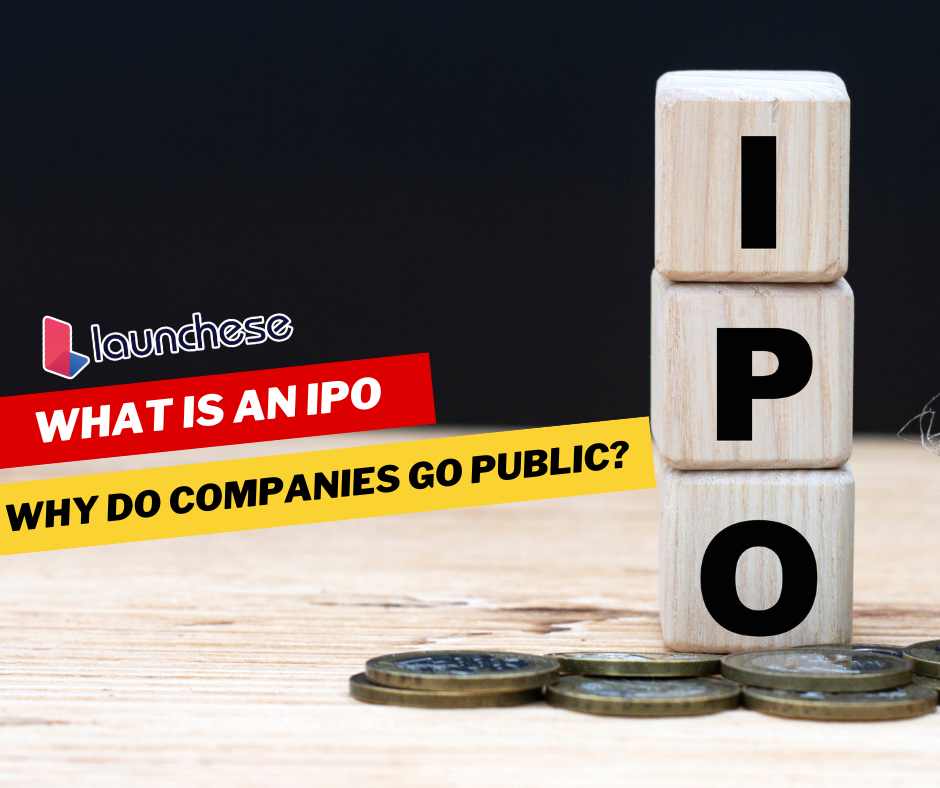Have you ever thought how companies like Google, Facebook, or Amazon transformed from small startups into global giants?
One key step in their journey was going public through an Initial Public Offering (IPO). But what exactly is an IPO, and why do companies choose this path?
What is an IPO?
An IPO is a financial event where a previously privately owned company offers its shares to the public for the first time. This means that shares of the company’s stock, which were once held by a select group of private investors, are now available for purchase by the general public on a public stock exchange.
The process begins with the company selecting investment banks to underwrite the offering. These investment banks facilitate the entire IPO process, from assessing the company’s value to pricing and distributing the shares to the public.
Once the shares are available for trading on a stock exchange, anyone can buy or sell them, making the company’s ownership more widely distributed.
Why Do Companies Go Public?
The decision to go public is a strategic one, driven by a range of factors, each influenced by the company’s goals, financial health, and market conditions. Here are some key reasons why companies choose to go public:
1. Access to Capital: One of the primary motivations behind an IPO is to raise capital for business expansion. Going public allows a company to sell shares to a large pool of investors, providing an injection of funds that can be used for various purposes, including research and development, acquisitions, or debt repayment.
2. Liquidity for Investors: For early investors, founders, and employees holding shares in the company, an IPO provides an opportunity to turn those shares into cash. This liquidity can be attractive, especially if they’ve been invested in the company for an extended period.
3. Enhanced Visibility: Going public increases a company’s visibility and credibility. It allows the company to attract more attention from customers, partners, and potential employees. Public companies are often viewed as more trustworthy and transparent.
4. Currency for Mergers and Acquisitions: A publicly traded company can use its stock as a currency for mergers and acquisitions. This can be a powerful tool for strategic growth, as it allows the company to acquire other businesses without using cash.
5. Employee Incentives: Publicly traded companies often use stock-based compensation as a way to attract and retain top talent. Employees can receive stock options or grants, which can become more valuable as the company’s stock price appreciates.
6. Benchmark for Valuation: Going public establishes a market value for the company based on its stock price. This valuation can be used as a benchmark for future fundraising, such as debt offerings or secondary stock offerings.
7. Shareholder Diversification: An IPO can allow a company’s founders and early investors to diversify their investment portfolios by selling a portion of their shares. This diversification can reduce risk and increase financial security.
Related Articles:
- Common Startup Mistakes You Need to Avoid
- Top 10 Business Ideas to Start in UK – Detailed Guide 2023
- How to Scale Your Business in 2024
- What is a Shareholder? – Meaning & Types Explained
Steps of IPO Process
While the decision to go public may be driven by various factors, the IPO process itself is a complex and highly regulated journey. Here are the key steps and considerations involved in taking a company public:
1. Initial Phase:
| Selecting Underwriters | The company selects investment banks to underwrite the offering and guide the IPO process. |
| Due Diligence | Comprehensive due diligence is conducted to assess the company’s financial health, operations, and compliance with regulatory requirements. |
| Financial Disclosures | The company prepares financial statements, prospectuses, and other documents for regulatory filing |
2. Regulatory Filings:
| SEC Registration | In the United States, the company files a registration statement with the Securities and Exchange Commission (SEC), detailing its financials, business operations, and risks. |
| IPO Pricing | The underwriters determine the IPO price based on market conditions and demand for the shares. |
3. Roadshow:
| Marketing | The company, with the help of underwriters, embarks on an IPO roadshow to market the offering to potential investors. |
| Investor Presentations | During the roadshow, the company’s executives present the business and its growth prospects to institutional investors. |
4. Public Offering:
| IPO Day | The company goes public by issuing shares on a stock exchange. This is when the general public and institutional investors can buy shares. |
5. Post-IPO Operations:
| Reporting and Compliance | As a publicly traded company, regulatory compliance, and financial reporting are ongoing requirements. |
| Shareholder Relations | The company must actively engage with shareholders, respond to inquiries, and hold annual meetings. |
6. Stock Performance:
| Market Evaluation | The success of an IPO is often measured by the stock’s performance in the secondary market. An increase in stock price post-IPO is seen as a positive sign. |
Challenges and Considerations
Going public is not without its challenges. Public companies face increased regulatory requirements, scrutiny from shareholders and analysts, and the pressure to meet quarterly earnings expectations. Additionally, the IPO process itself can be expensive, time-consuming, and demanding on management’s time and resources.
It’s essential for companies considering an IPO to carefully weigh the benefits against the challenges and ensure they have a well-thought-out strategy for transitioning to a public company.

